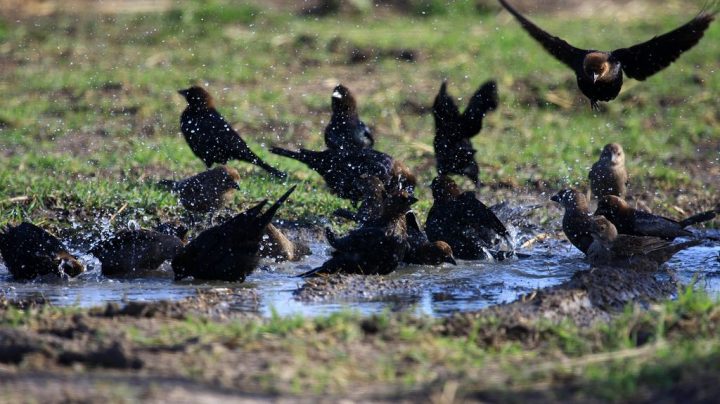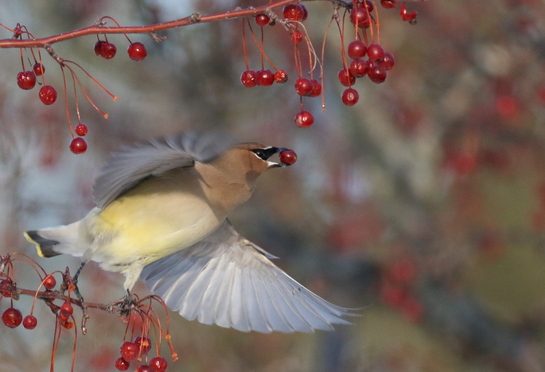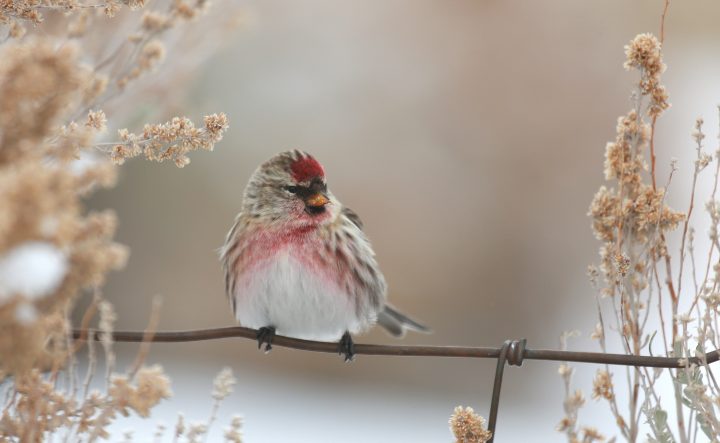Bird Friendly Winter Gardens
Most of our gardening happens from spring until fall, but what about during those cold winter months? If your plants don’t survive during the frost and snowy season, what do your local birds do? In winter, your residential birds seek out three main ingredients needed for survival: food, water, and cover. While most gardens can provide these in the summer, increasing habitat loss makes things harder for birds during the cold months.
Let’s investigate how gardens can provide the essentials for birds who brave the elements!

Brown-headed Cowbirds enjoy a natural water source. Picture by Tim Lenz, eBird submission.
Water Sources
Water is essential for all animals and can be scarce in winter. A natural water source such as a stream or pond is a great place for local birds, but these freshwater reservoirs will often freeze in the winter, preventing birds from accessing them.
Consider adding a heated bird bath or aerator to your space. A heater, bubbler, or other water feature addition will prevent ice from forming on a bird bath. These are often small and relatively inexpensive, plus fresh water will attract tons of birds to your garden! Place it on a ledge or wall to encourage squirrels and chipmunks to benefit as well. You can leave this bath up all year and utilize the heating when needed, just be sure to change the water frequently.

Cedar Waxwing flies off with a berry. Photo by Oliver Burton, eBird submission.
Feeding Opportunities
Many winter plants can provide food for birds that prefer seeds and fruit. Plants like Staghorn Sumac, viburnums, Virginia Creeper, Service-berry, Winter berry Holly, Bayberry, and others provide fruit and berries that birds love. If you have the room, evergreen trees can provide seeds from cones. Crab Apple trees can provide both fruit and seeds. Many gardeners find that berries are the easiest thing to offer, as most plants providing them are shrub-like and small.
In addition to planting food sources, you can also add a bird feeder to your winter garden to supplement the diet of hungry birds. Consider making your own DIY feeder.
When choosing plants for your garden, remember to go native! If you’re not sure which birds eat what food, check out Project FeederWatch for an online interactive.

This Common Redpoll is toughing out the cold winter winds. Photo by Tim Lenz, eBird submission.
Sheltering your Feathered Friends
Trees and plants in your garden can offer shelter to birds. While plants like shrubs and trees that maintain their leaves during the winter can provide cover from the wind, rain, and snow, there are other ways you can offer shelter. When choosing plants for your garden, consider different canopy levels for diverse shelter needs. Brush piles can also provide a safe place for birds to hide, so try making your own from your yard waste.
Consider offering a roost box for your backyard birds, similar to the one found at All About Birds. You can also modify a nest box to make it a temporary roost box.
Going Further
- Project FeederWatch is a great way to get involved in citizen science and help scientists track winter bird populations simply by watching your local birds!